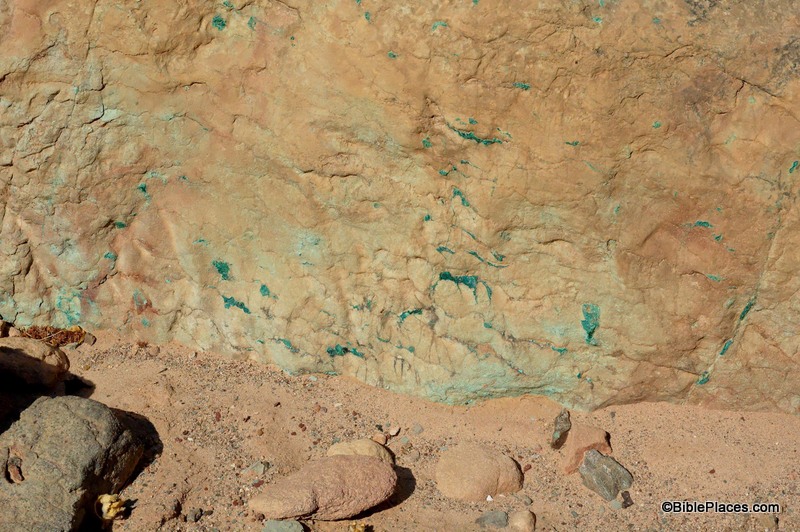(Post by Seth M. Rodriquez)
This week’s photo comes from Volume 6 of the revised and expanded edition of the Pictorial Library of Bible Lands, which provides a collection of pictures from the country of Jordan. In my introduction to this series, I promised to highlight “the more unusual pictures that illustrate a particular feature of geography or archaeology that can be easily overlooked or that other photo collections fail to include.” So this week’s picture is not a stunning photo of the ruins of Petra or the amazing Roman city of Gerasa or even the biblically significant Mount Nebo and Plains of Moab (although the new edition of the PLBL has new photos of each of those places). Instead, this week’s photo was taken south of the Dead Sea in Wadi Jariya and focuses on a small section of bedrock. It is entitled “Wadi Jariya Exposed Copper Ore in Bedrock” (photo ID #: df070807104) and was taken by Dr. Daniel Frese. (Click on the photo for a higher resolution.)
You will never see this picture framed in a Sunday School classroom or hanging over someone’s mantelpiece, but it can go a long way in illuminating Deuteronomy 8:9 and is useful when explaining the process of ancient copper mining.
Deuteronomy 8:9 states that copper could be dug “out of the hills” in the land of Canaan. Although Wadi Jariya lies within the territory of Edom and is outside the borders of the Promised Land, the process was similar there. In the photo, the green specks on the rock are the copper ore. This ore was chiseled out of the rock and then refined through a smelting process which removed the impurities. When the impurities cooled, they formed a solid, dark substance called slag. At various locations in Israel and Jordan (as well as elsewhere in the Middle East) large amounts of slag are left over from antiquity. In fact at Khirbet en-Nahas, a neighboring site to the Wadi Jariya operation, a slag pile over 20 feet deep has been discovered.
Copper mining was an important element of the ancient economy since copper was used extensively in that society. Usually the copper was mixed with a little bit of tin and was thus transformed into bronze, a strong metal sometimes used in scripture to refer to someone or something hard or stubborn (Deut. 28:23; Jer. 1:18; 6:28). Bronze was used to make many things in biblical times, such as utensils (Exod. 38:3), weapons (1 Sam. 17:6), chains (2 Kgs. 25:7), and cymbals (1 Chr. 15:19) to name a few. Its value is seen in the fact that it was listed among the spoils of war along with gold, silver and iron (Josh. 6:19, 24). But its humble beginnings can be traced back to this picture … as a green speck within a hard rock found in a dry valley.
This and other photos related to copper mining are included in Volume 6 of the Pictorial Library of Bible Lands and can be purchased here. More information and photos about copper mining can be found on the BiblePlaces website here.
